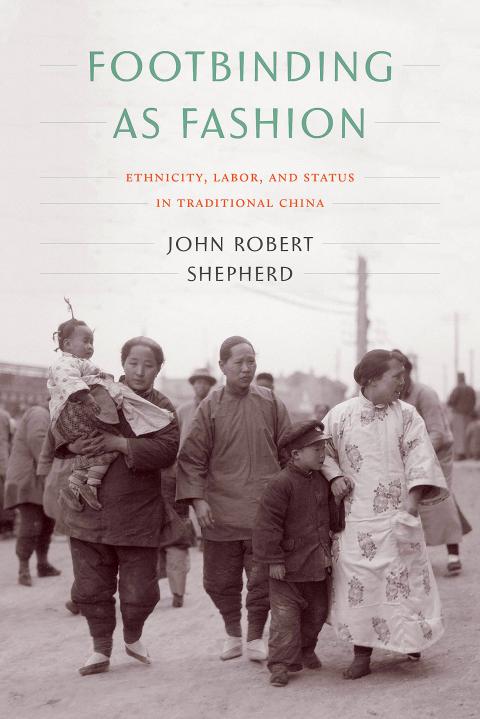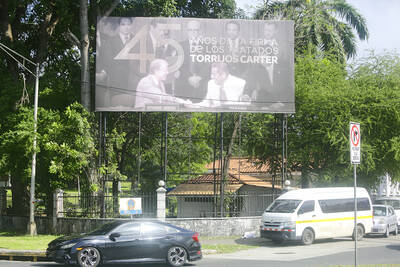While Footbinding As Fashion looks at the practice in “traditional China,” much of this book is about Taiwan. The nation’s Hoklo majority brought the custom with them when they emigrated en masse across the Taiwan Strait, keeping the majority of their women’s feet tiny and their gait hobbled for centuries until the Japanese colonizers arrived and stamped out the practice.
But most importantly, it was the Japanese who produced the “only systematic accounting of the practice of footbinding that was ever produced” through the 1905 and 1915 censuses of Taiwan, where the author could cross-reference rich data sets that included languages spoken, Chinese province of origin (or Aboriginal), livelihood and whether they were “ever-bound” (currently bound or once bound and released) or “never-bound.”
As a result, researchers can obtain details as specific as the percentage of Hoklo-speaking Taiwanese with ancestry from Fujian Province between the ages of 21 and 30 who at some point stopped binding their feet. The dates are also crucial because the Japanese intensified their efforts in eradicating footbinding in the 1910s until they outright banned it in 1915.

The Japanese made such detailed records not only to keep tabs on the population and prove themselves as “model” colonizers to the international world, but also because they sought to eradicate the “three degenerate practices” among local people: footbinding, queue wearing and opium smoking. The data reveals that footbinding was almost exclusively a Hoklo practice, accounting for 99.6 percent of “ever-bound” women in Taiwan.
While the Nationalists in China also sought to eradicate “backward” practices after overthrowing the Qing Empire, the new nation remained in turmoil for the next few decades, with no census conducted until 1928 upon the conclusion of the Northern Expedition. That census had some records on footbinding, but due to constant warfare and lack of resources, it is nowhere near the completeness and detail of Japanese work in Taiwan. Thus, Taiwan takes the main stage here while case studies in Hebei, Liaoning and Beijing serve to contrast and compare for a broader picture of footbinding culture.
Author John Robert Shepherd has done much of his academic work on Taiwan and received support from Academia Sinica and the Chiang Ching-kuo Foundation. Footbinding As Fashion is not a case where a book on Taiwan is placed within the context of a “greater China” because far more academics are interested in China over Taiwan. Footbinding played an important and strikingly similar social role in both China and Taiwan, and although Taiwan has the better data, the study would simply be incomplete if China werent’ examined.
For example, interesting comparisons can be drawn between what happens when footbinding Hoklo encounter nonbinding Hakka when moving to Taiwan and when footbinding Northeastern Han Chinese encounter nonbinding Manchus when moving to Liaoning. As Shepherd tries to discredit popular theories about footbinding as a whole, just looking at Taiwan is not enough as critics may point to Taiwan being a special case due to its historical isolation from China. But apparently like China, the practice in Taiwan was so deep-rooted into the social fabric that it took a momentous effort to curb it. Women in both locales did not see the banning of footbinding as female liberation; they were mortified at what unbinding would do to their social prestige and chances of marrying well, as Shepherd explains at length in the book.
There are many common theories as to why foot-binding was such a widespread phenomenon across all classes in certain areas of China and Taiwan, from Han Chinese using it as an ethnic marker against Manchu oppression to the sexual fetishizing of small feet to the type of agriculture and economic tasks required upon the women. But Shepherd’s point is that it was simply a hegemonic fashion standard that, if not followed, would lead to loss of status and outright ridicule.
The book carefully examines seemingly every other existing explanation on footbinding and refutes them using historical sources, ethnographic reports, economic surveys and census data. Shepherd’s counterarguments are so detailed that extended sections deal with data analysis, which can make parts of the book a rather dry read, but as a result his points are well-backed up.
An example of the breadth of Shepherd’s examinations can be seen in the chapter on agriculture, where he looks at the proximity and percentage of Hakka people in farming villages, dry versus wet cropping and type of crops grown, owners versus tenants and so on. When areas in Taiwan that practiced dry cropping, which is friendlier for bound feet, did not display higher footbinding rates, Shepherd discredits one more theory that may ring true in China but could also be explained by different social factors.
It’s a comprehensive and convincing look at footbinding as a whole that will serve as an invaluable resource for further research on the practice, especially in Taiwan. It’s still a part of Taiwan’s past that’s not often discussed, and it would be interesting to see a book just looking at the practice in Taiwan and how its Japanese-friendly intellectual elites such as Huang Yu-chieh (黃玉階), who headed the Taipei Natural Feet Association (台北天然足會) in 1900, played a part in eventually eradicating the crippling custom, which was so important that even the women refused to give it up despite the pain and suffering it brought.

April 14 to April 20 In March 1947, Sising Katadrepan urged the government to drop the “high mountain people” (高山族) designation for Indigenous Taiwanese and refer to them as “Taiwan people” (台灣族). He considered the term derogatory, arguing that it made them sound like animals. The Taiwan Provincial Government agreed to stop using the term, stating that Indigenous Taiwanese suffered all sorts of discrimination and oppression under the Japanese and were forced to live in the mountains as outsiders to society. Now, under the new regime, they would be seen as equals, thus they should be henceforth

Last week, the the National Immigration Agency (NIA) told the legislature that more than 10,000 naturalized Taiwanese citizens from the People’s Republic of China (PRC) risked having their citizenship revoked if they failed to provide proof that they had renounced their Chinese household registration within the next three months. Renunciation is required under the Act Governing Relations Between the People of the Taiwan Area and the Mainland Area (臺灣地區與大陸地區人民關係條例), as amended in 2004, though it was only a legal requirement after 2000. Prior to that, it had been only an administrative requirement since the Nationality Act (國籍法) was established in

Three big changes have transformed the landscape of Taiwan’s local patronage factions: Increasing Democratic Progressive Party (DPP) involvement, rising new factions and the Chinese Nationalist Party’s (KMT) significantly weakened control. GREEN FACTIONS It is said that “south of the Zhuoshui River (濁水溪), there is no blue-green divide,” meaning that from Yunlin County south there is no difference between KMT and DPP politicians. This is not always true, but there is more than a grain of truth to it. Traditionally, DPP factions are viewed as national entities, with their primary function to secure plum positions in the party and government. This is not unusual

US President Donald Trump’s bid to take back control of the Panama Canal has put his counterpart Jose Raul Mulino in a difficult position and revived fears in the Central American country that US military bases will return. After Trump vowed to reclaim the interoceanic waterway from Chinese influence, US Defense Secretary Pete Hegseth signed an agreement with the Mulino administration last week for the US to deploy troops in areas adjacent to the canal. For more than two decades, after handing over control of the strategically vital waterway to Panama in 1999 and dismantling the bases that protected it, Washington has